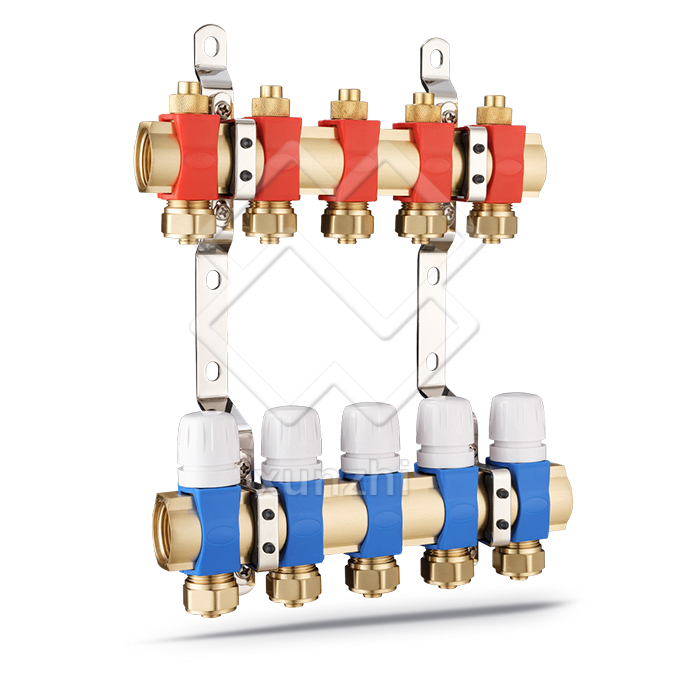One, wet installation
Wet installation method is currently a more mature installation process for plumbing floor heating, and the price is relatively low. It is the dominant process in the domestic floor heating market. The so-called wet type refers to embedding the floor heating pipes with concrete, and then laying the ground, tiles and other ground materials on the concrete layer. This layer of concrete not only protects and fixes the plumbing pipes, but is also the main channel for heat transfer. The concrete layer can distribute the heat evenly, reducing local overheating or overcooling.
2. Dry installation
In order to solve the problems of traditional wet installation method, which is difficult to construct, long construction period, and difficult to maintain after installation, dry installation method came into being. Dry installation no longer uses the concrete peas layer to fix the plumbing pipes, but uses a special plastic template to jam the pipe in the bulge of the template, which is very convenient for laying. The floor is directly laid on the plastic template, and the hot water transfers heat to the floor through the air and the template, and then the floor heats the air.
Dry installation example Compared with wet installation process, dry template installation has the following advantages:
1. The floor heating system laid by this module can be easily repaired in case the pipeline is damaged in use;
2. No need for pipe clamps, cable ties and steel mesh construction steps, which greatly simplifies the difficulty of construction. At the same time, because there is no need for cement curing period, the construction schedule is also shortened from 1 week to 2 days;
3. The modules and pipes are made of plastics, and the coefficients of thermal expansion and contraction are similar, which solves the problem of pipe rupture and cement leveling cracking caused by thermal expansion of the pipe;
4. Because the cement peasant layer is omitted, and the keel layer and the floor heating layer are on the same plane, the entire floor heating layer is only 4.5-5 cm high (including 2 cm of insulation layer), which reduces the occupation of the effective floor height. In contrast, if the keel is to be laid in a wet installation, the cement pebble layer is generally 10 cm, and the keel is 3 cm above, which takes up a total of about 13 cm in height;
5. The dry installation method can be easily applied to laying with keel and without keel. It can directly lay the wooden floor decoration layer on the module, and is suitable for laying heat storage bodies (such as thermal insulation sand);
6. ??The health care purpose can be achieved by choosing modules with far-infrared and magnetic health care functions. This module adds particles capable of generating far infrared and magnetic fields during the production process;
7. The module itself is a plastic light-weight material, without cement and pea stone leveling layer, saving materials, transportation costs and labor costs, and reducing floor load. In addition to the higher price of dry installation, the limitation of dry installation is that it cannot be installed under floor materials such as floor tiles and marble, because these materials must be fixed with cement when laying. Therefore, dry installation is usually not used in toilets and kitchens. In addition, since the dry installation method has just started in China, the number of installations is relatively small, and whether it is suitable for the domestic climate and the condition of home decoration materials needs more time to test.
